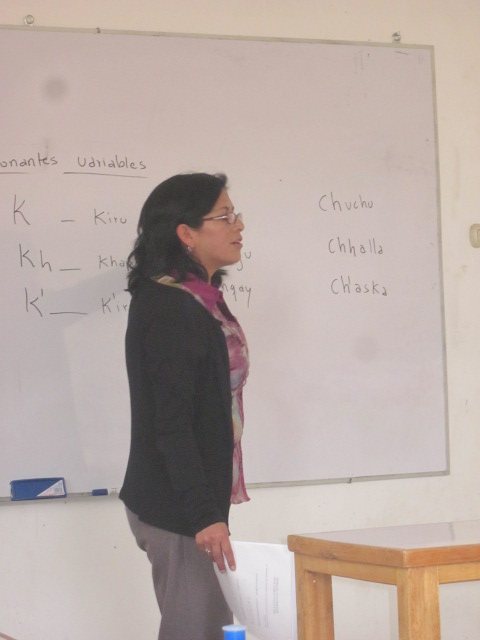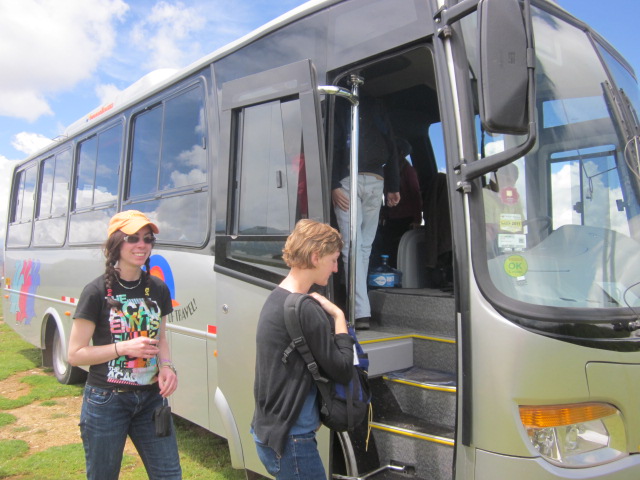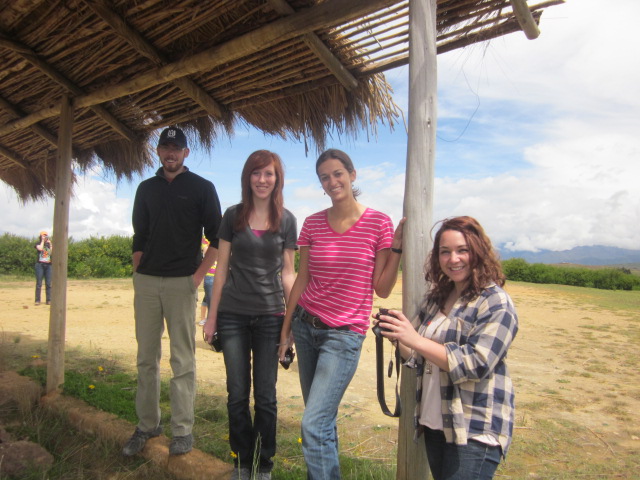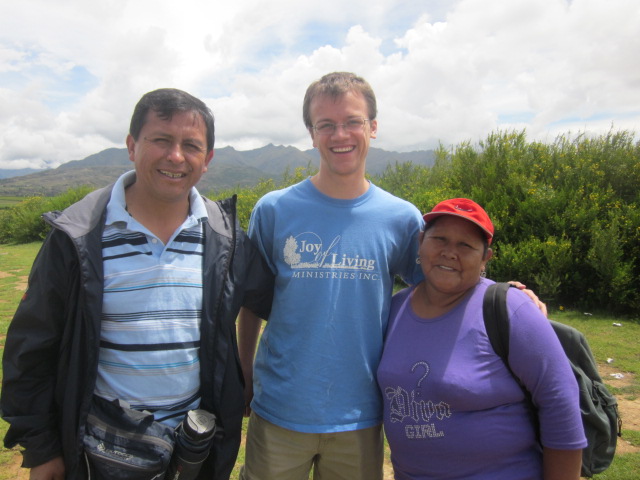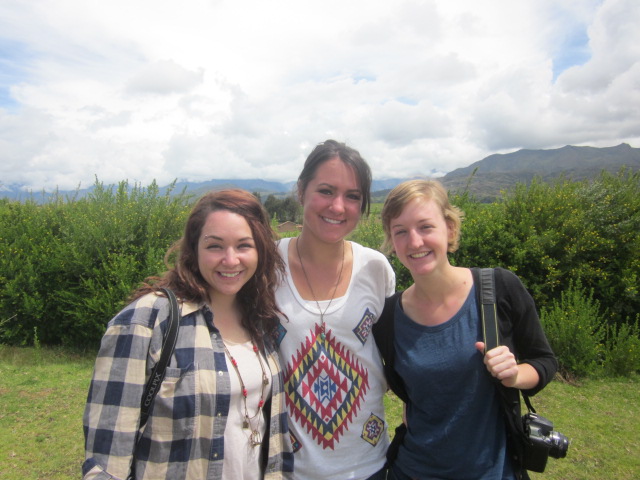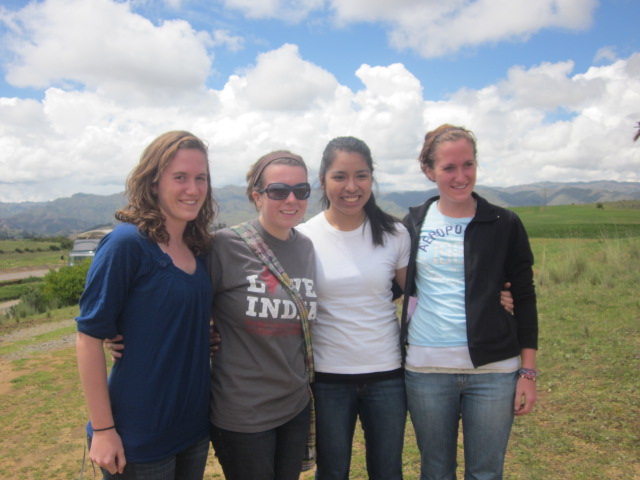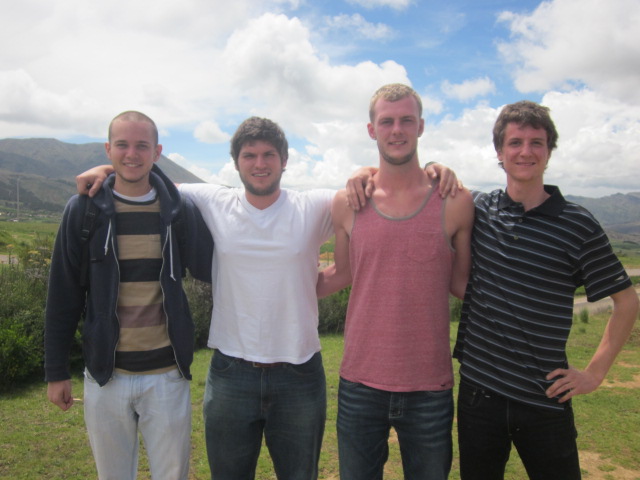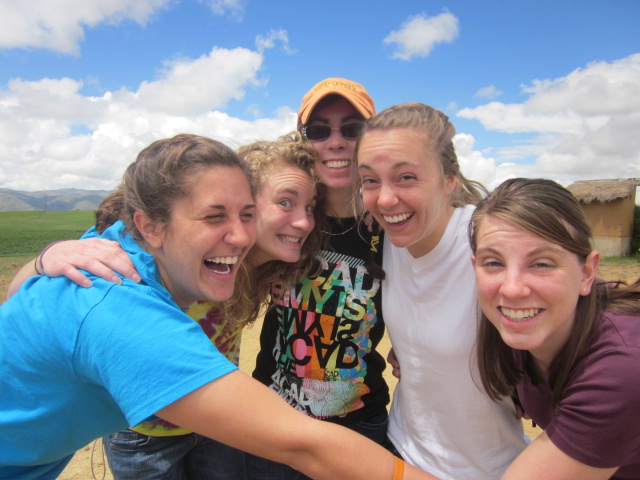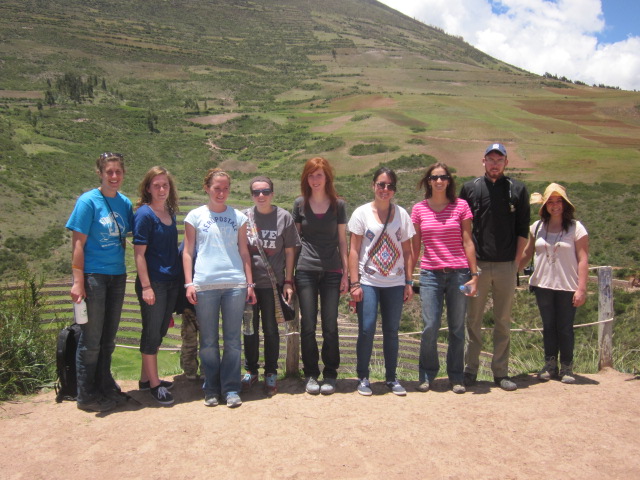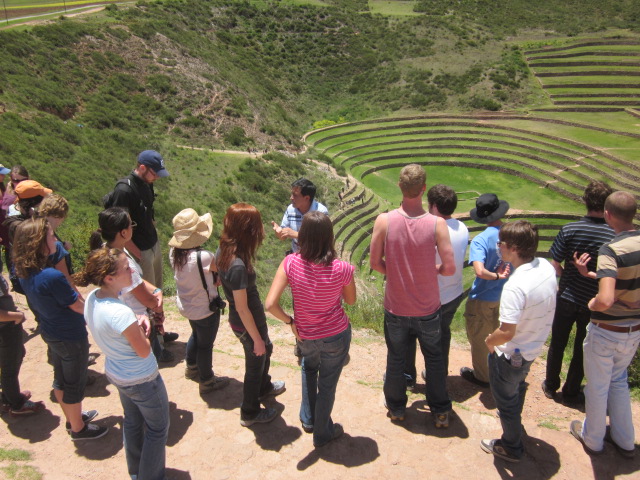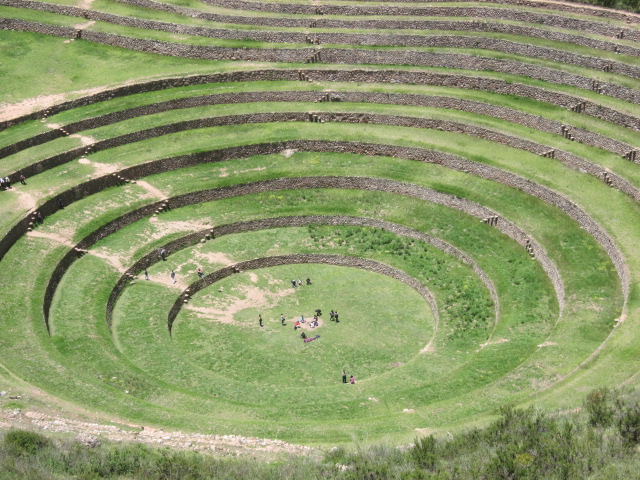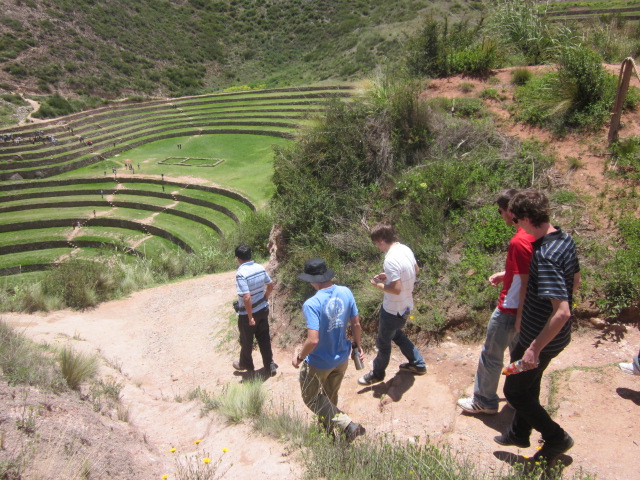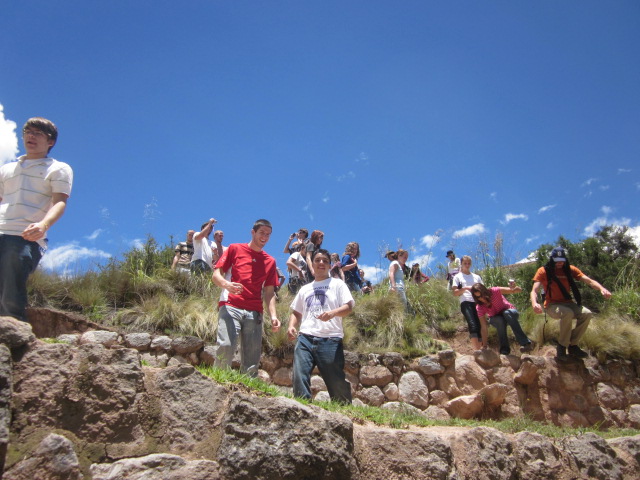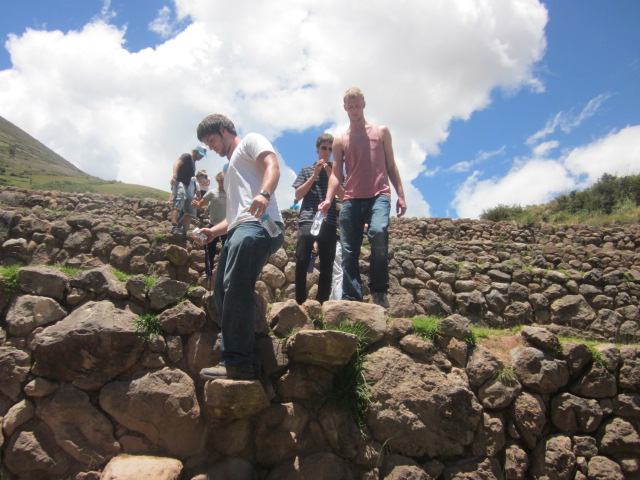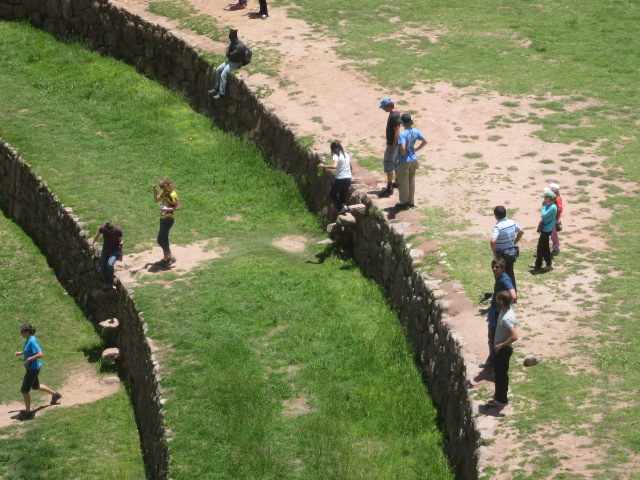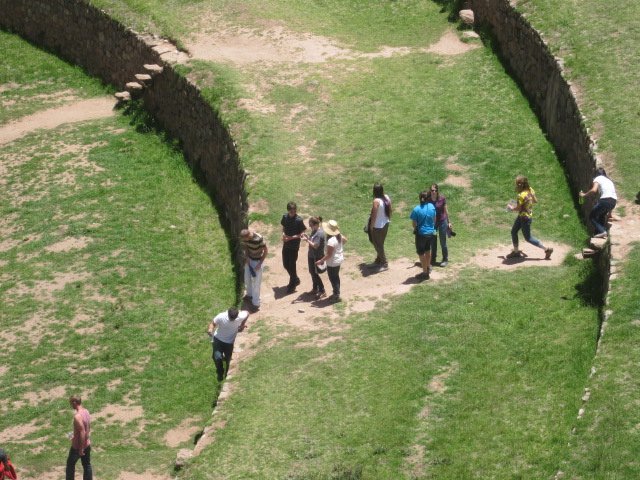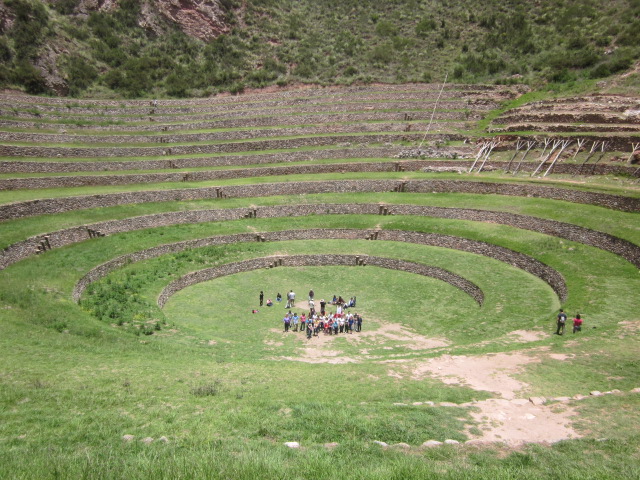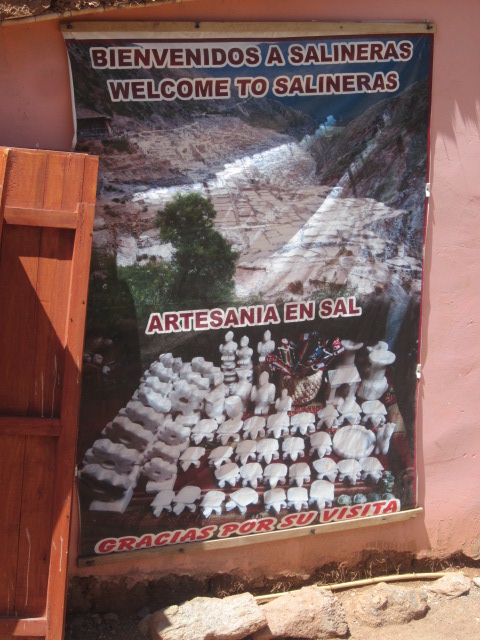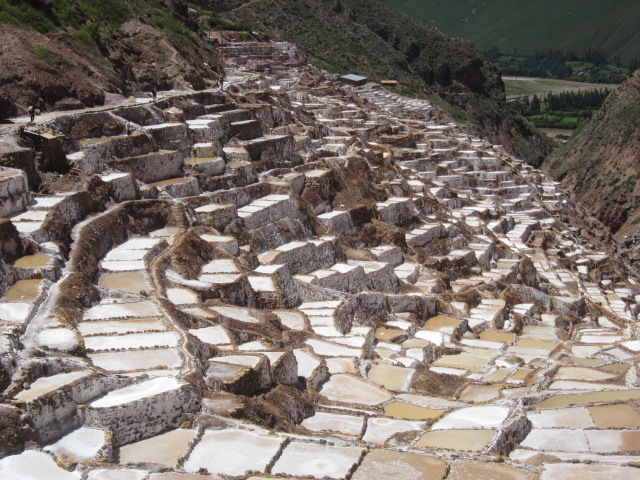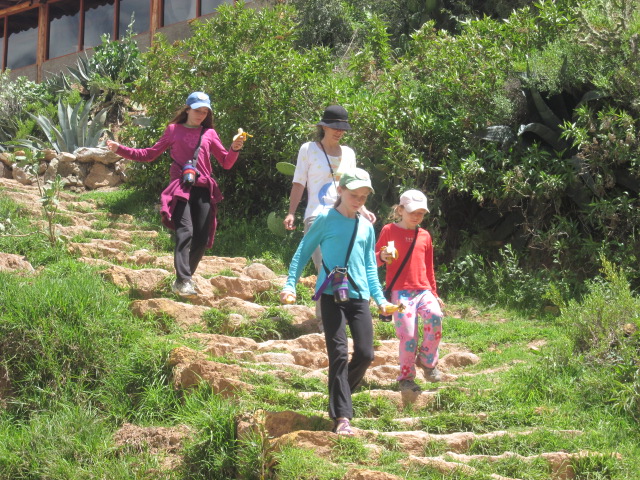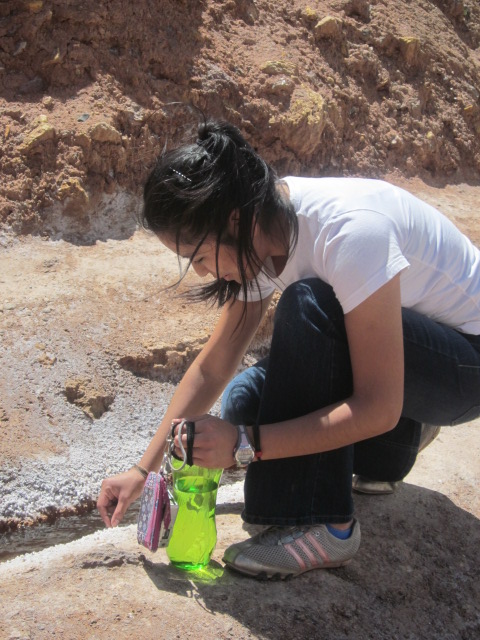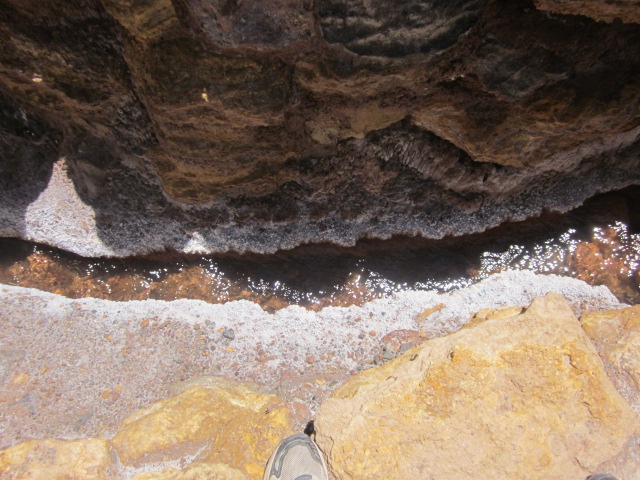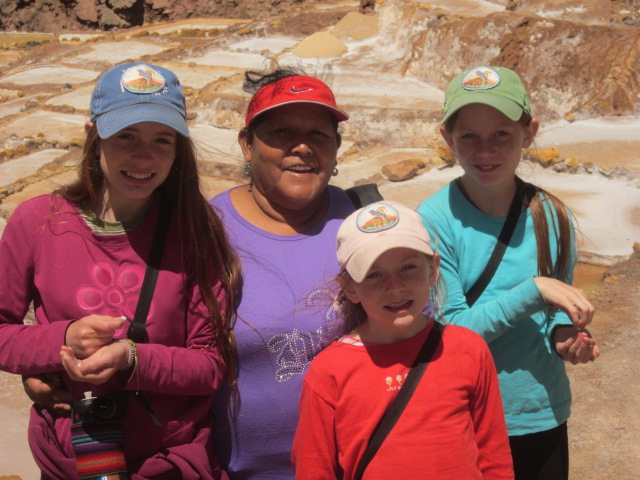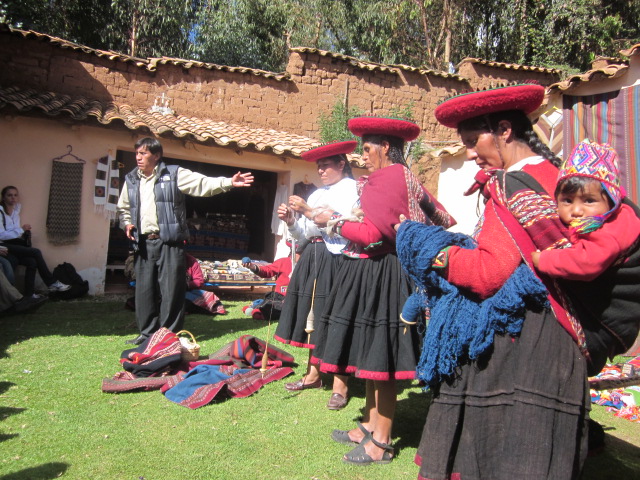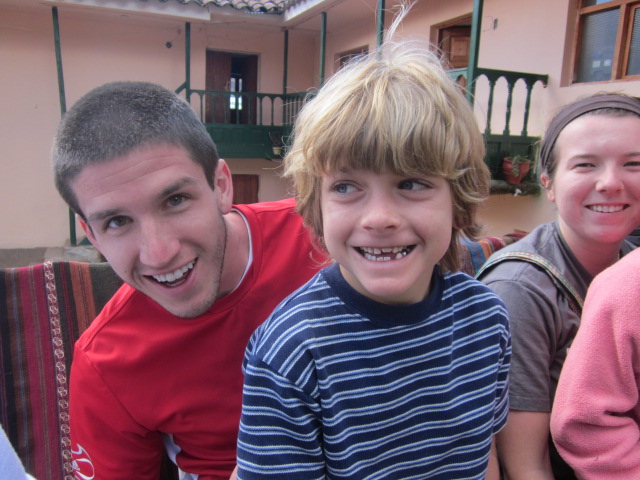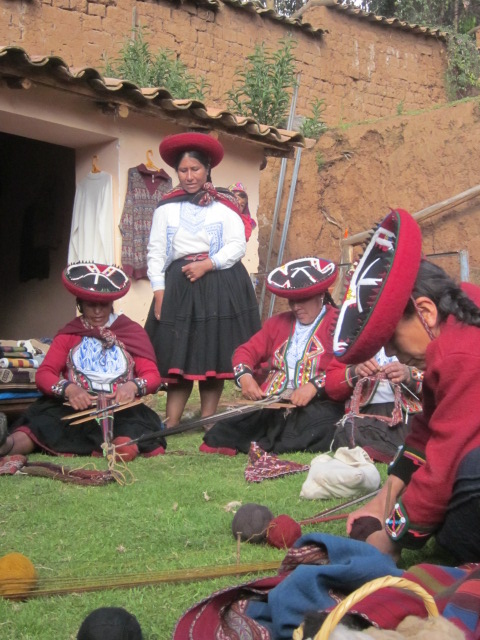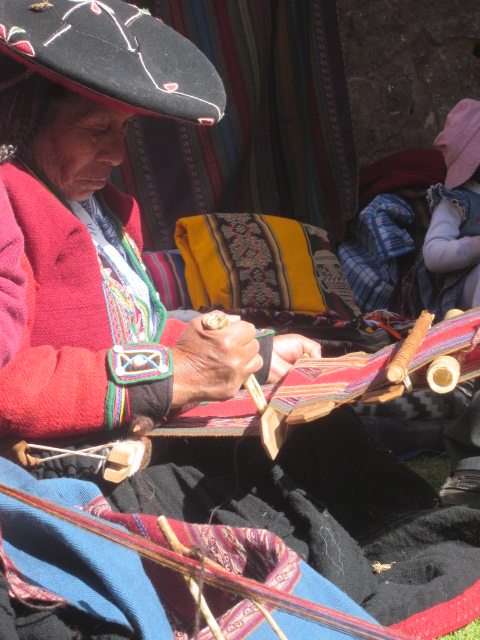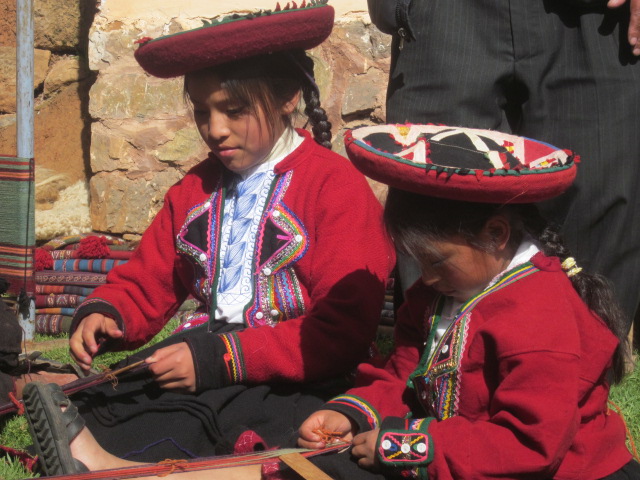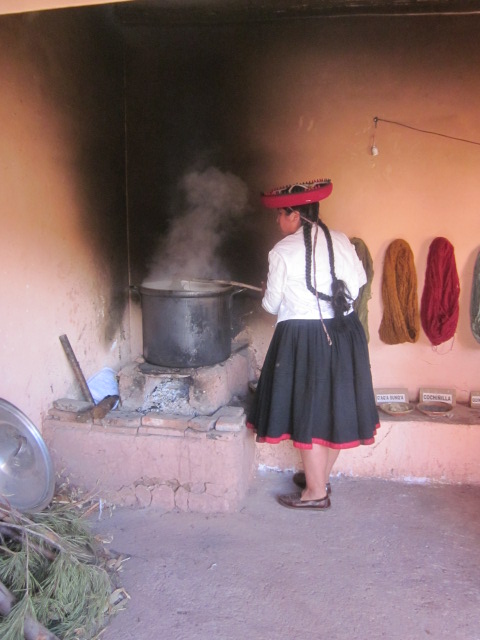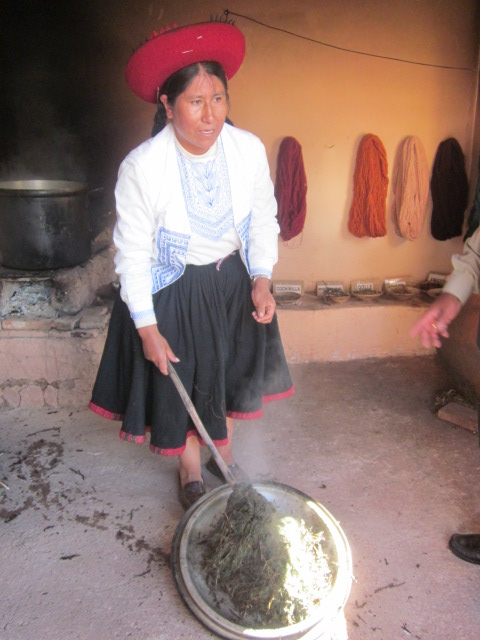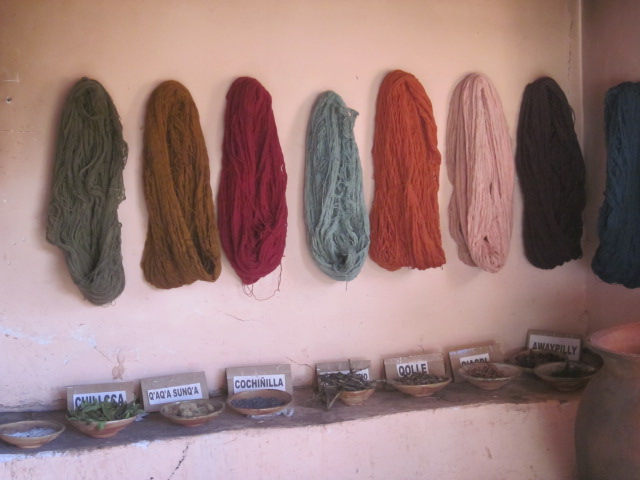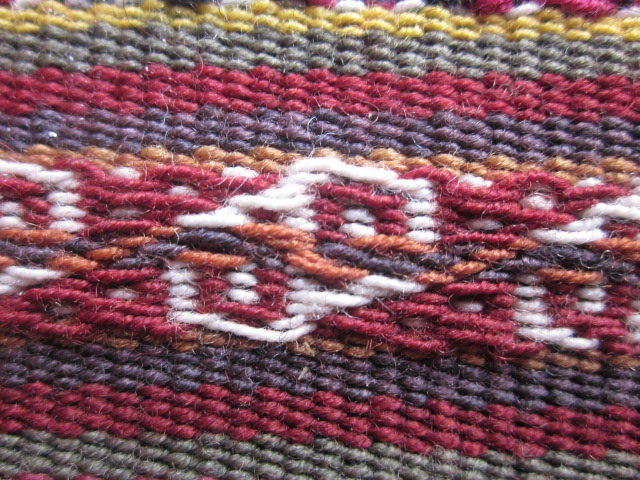Quechua, Agriculture and Weaving
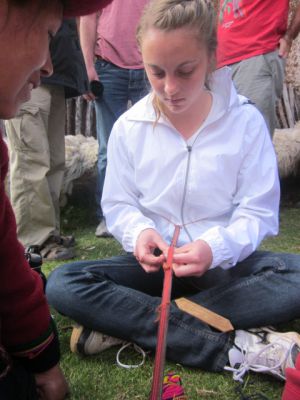
Quechua is the language of the Incas. It is the second-most common language in Peru. We asked one of our Spanish language instructors, Luz Atapaucar, to give us a lecture on Quechua. Luz, a native of Cusco province, grew up speaking Quechua to her grandmother and other family members. She explained that Quechua is spoken by 8 million Peruvians, as well as Andean inhabitants of Ecuador, Bolivia, Colombia, Brasil, Chile and Argentina. After centuries of suppression under Spanish rule, it finally became an official language in Peru in 1975. The language is still spoken extensively in rural areas and among older people. Though many younger people would prefer to learn English, the native language is experiencing a resurgence in universities and among noted poets and authors.
Quechua uses onomatopoeia: words imitate or suggest the source of the sound that they describe. For example, the word for car is “titititiamoshacarro” — the “titititi” suggests the sound of an approaching vehicle. The language builds words through aggregation of suffixes, such as adding “kuna” to a word to make it plural or “y” to make it possessive. Quechua words and phrases are very common here and many students live with host families where Quechua is spoken by some or all of its members. We appreciated the chance to learn more about the origin, history and structure of this language as we develop a better sense of place.
Moray is an Inca ruin unlike any other. Our guide, Oswaldo Palomino, described how prominent archaeologists from the United States, Egypt, Mexico and other nations have visited this site and marveled at its design. Moray consists of twelve concentric circular terraces, each one lower than the one above, that penetrate deep into the side of a mountain. Each terrace has a different micro-climate, with lower terraces simulating the growing conditions at lower elevations in the Andes. Scholars theorize that the Incas developed and tested varieties of corn, potatoes and other crops here. They would have planted a particular variety on several different terraces to observe at which elevation it grew best.
The English word “jerky,” as in beef jerky, originated from the Quechua word Ch’arki. The Incas and the cultures that preceded it preserved llama and alpaca meat by salting and drying it. Where did all this salt come from? We visited the salt works at Maras to find out. A spring emerges from the earth here, providing a small stream of saline water that is carefully channeled into a series of 2,000 ponds. Each pond produces about 100 kilos (220 pounds) of salt per month and is owned and managed by a particular family in the nearby town.
Peru is famous for its fine textiles. We visited the Andean Weaving Center, a workshop where women use looms to produce mantas (blankets used to transport anything from babies to corn on one’s back), table runners and clothing. We learned from our host, Rene Huaman Callanaupa, that these traditional weaving techniques were almost lost during the colonial period as Andeans were forced to work in the mines and haciendas (estate farms) for their Spanish masters. In the last several decades arts like these have been revived by the influx of tourism. The techniques are labor intensive — it takes several weeks to make a table-runner — and foreign tourists have sufficient income and interest in these pieces to support the artisans through their purchases.
